Santa María de Melque is one of most beautiful Visigothic churches in Spain.
Of course, it can be considered the most important place when thinking about a Visigothic route through the province of Toledo.
A fact that makes us realize the importance of this historical monument of Toledo is that it is about oldest monastic complex preserved in Spain.
All the information in detail
Curiosities history of Santa María de Melque
Although the exact date of its construction is not known, there is no doubt that it dates back to the last decades of the 7th century.
When was Santa María de Melque founded
The complex was probably completed around the year 700, that is, shortly before the arrival of the Muslims to the peninsula in 711.
Over the centuries the complex has gone through different stages, with different uses and owners.
Although the construction underwent modifications over time, and has been partially restored in recent years, Melque It conveys a deep sense of unity and antiquity, a very well preserved complex.

Therefore it can be said without exaggeration that visit Santa María de Melque It's like taking a trip back in time.
Hermitage of Santa Maria de Melque
Tras the reconquest, the place recovered its religious function and, over time, came under the control of the Montalbán Commandery. Later it lost its population and was reduced to a hermitage in a lonely place.
After the confiscation of the 19th century, it passed into private hands and the building was used as a stable and warehouse.
The buildings we see around them now are farmhouses built for the exploitation of the place.
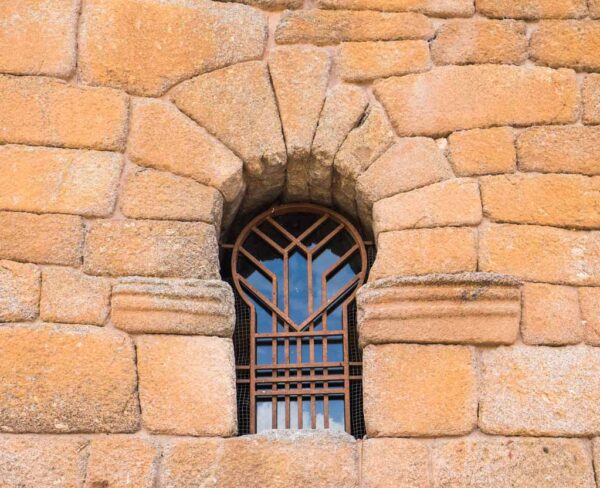
Although it is normally thought of Melque like a iglesia, in reality the building is part of a much larger unit; In fact, the protected complex occupies an area of 29 hectares.
The one who is visigothic monument It is surrounded by nature, as it must have been at the time of its construction, makes us feel better what this temple must have been like 1300 years ago.
Its location in an isolated place was one of the decisive conditions for being chosen to build a monastery, isolation that in turn favored its conservation.
It is likely that it was ordered to be built by an important official at the Toledo court, and historians give us several keys that help us understand the reason.
The temple emerges as burial place of a character linked to the Visigothic royalty, who wanted his body to be preserved in a church.
The problem is that this practice was prohibited by the legislation of the time, probably so that over time the buried nobleman would not be confused with a saint, and a cult of the wrong character would be generated.
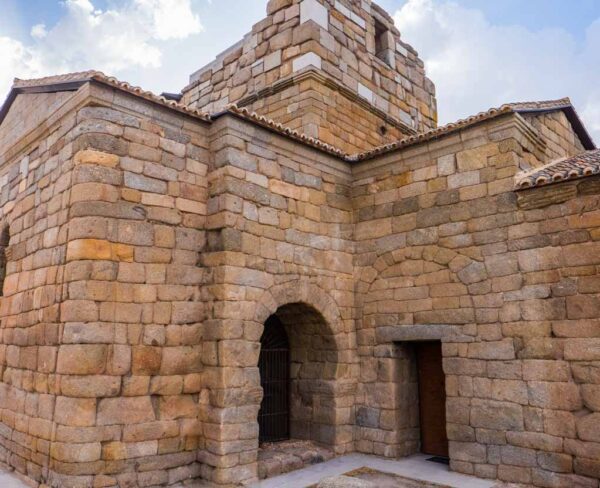
This prohibition was strictly maintained in the capital and large towns, but not in isolated places.
Therefore it was decided to build a monastery in a very isolated place, and for this purpose what must have been an old estate organized around a Roman Village.
It must be remembered that the monasteries, as economic, political and cultural centers when it came to organizing and controlling a territory, were the heirs of the roman villas.
This construction complex included, in addition to the church, a walled enclosure, the monks' homes, agricultural terraces and five dams. Some of these dams are of Roman origin.
ORGANIZE your TRIP
- Don't forget your TRAVEL INSURANCE with a 5% discount
- Book the HOTEL for your trip
- RENT a CAR for your trip
- The best TOURS and EXCURSIONS in Spanish
- NO-LINE TICKETS for museums and monuments
- Best FREE TOURS around the world
- Book your TRANSFER from the airport
- eSIM card with INTERNET at the best price
This last fact should not surprise us since the monastic complex itself was built, as has been said, around a ancient roman villa.

How to visit and what to see in the Visigoth complex of Melque
Therefore, the interesting thing is that the area that can be visited is not limited to the church, but includes the area that extends around it, the so-called Melque set.
The quality of the architectural work and the surrounding nature form a unique ensemble and make it one of the best places in the entire Peninsula to travel with the imagination to that period so far away in time, and so interesting, that has occurred in call the Late Antiquity, the transition between Old age and Middle Ages.
When observing the temple, both from the outside and the inside, we find construction details of Roman architecture, which remind us something of Aqueduct of Segovia, but on the other hand we see more evolved solutions.
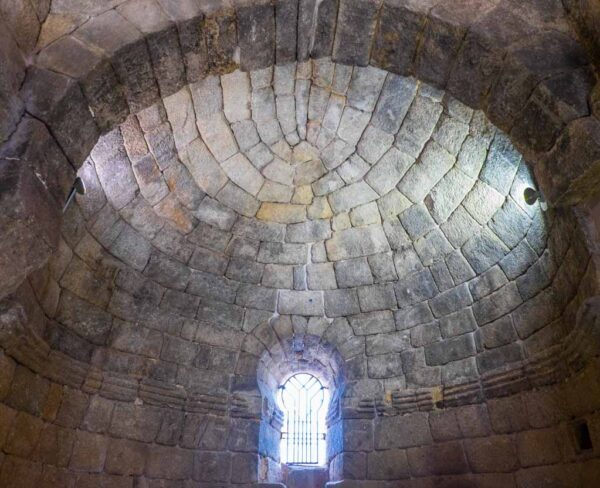
The Muros They are built with granite, with blocks of very different sizes, they are very robust and are more than a meter thick.
The set is asymmetrical due to the additions that were incorporated over time. Among these additions are the rooms on each side of the apse and another to the left of the entrance.
This last enclosure could have been a small cloister, but also a ossuary.
The start of what was a tower over the transept, probably from the time when the complex became a small fortress.
La hermitage is greek cross plant, although with unequal arms. A detail that may surprise is to find that the apse, that is of horseshoe plant, it is square on the outside.
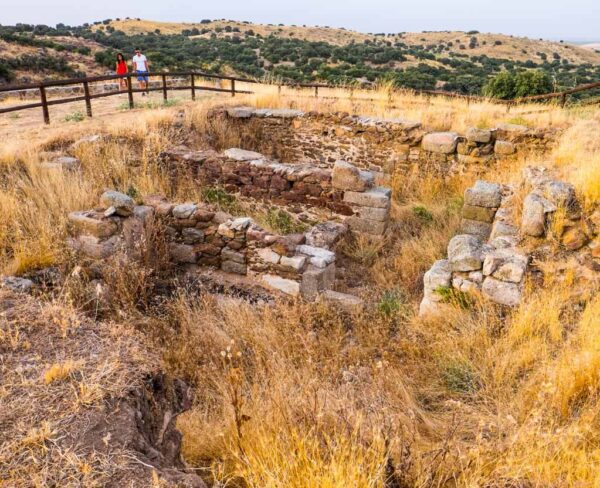
Another detail that draws attention is the entrance, which is made through a lintel door opening, but which is relieved by an arch.
La iglesia It has several openings for lighting, which are all relatively small.
This may be due to fear of collapses or as a defensive measure against possible attacks, which reinforces the appearance of church-fortress.
The decoration of the walls is minimal, both outside and inside, but although now we see the bare walls, it is possible to think that at the time the walls were covered with stucco and decorated with paintings and some reliefs.
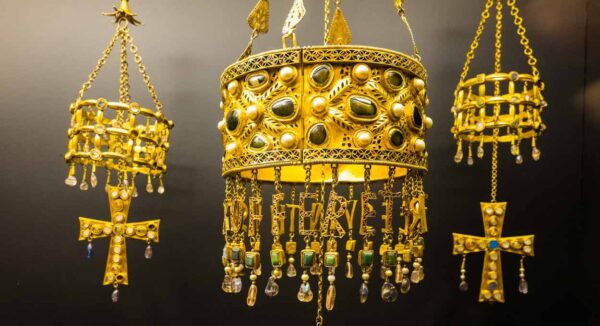
Some remains of this decoration can be distinguished at the beginning of the main arches, which support the transept.
It would be decoration with plant motifs that represented the ideal of earthly paradise.
A curious feeling when entering is that the granite ashlars are something alive that is settled in the depths of time, and when leaving, that immense expanse of solitary field makes us feel very far from the world.
Visiting times for Santa María de Melque
The Visiting hours of Santa María de Melque They are every day of the week, except Monday, from April to October, from 11 a.m. to 20 p.m., and from November to March, from 9 a.m. to 18 p.m.
La Visit to Santa María de Melque is free.
In the old farmhouses next to the temple, the Interpretation Center of Melque and the Visigoth period which is very interesting to visit to understand many details of this place, which since 1993 has been considered an asset of cultural interest and has the protection it deserves.
Don't forget your Travel Insurance
Are you organizing your trip or getaway? Don't leave without take out your travel insurance before, and here we explain why. If you hire it with us, you have a 5% discount
Map: how to get to Santa María de Melque in Toledo
Santa María de Melque is located 45 minutes by car, southwest of the city of Toledo, and an hour and a half from Madrid.




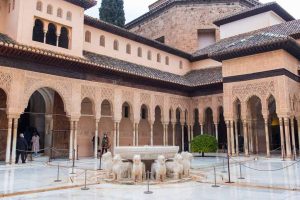












Comment